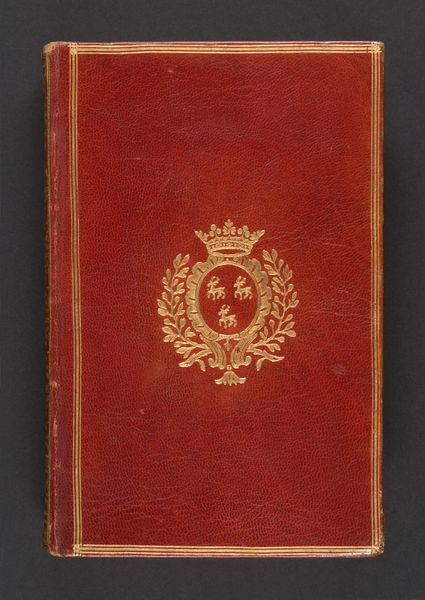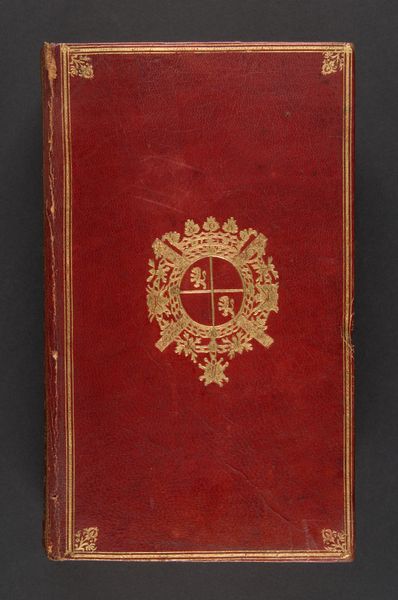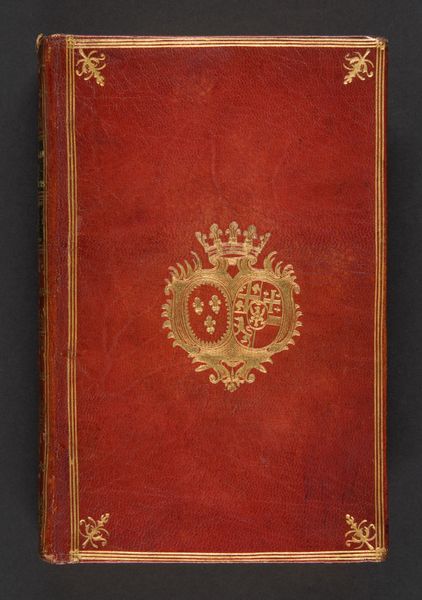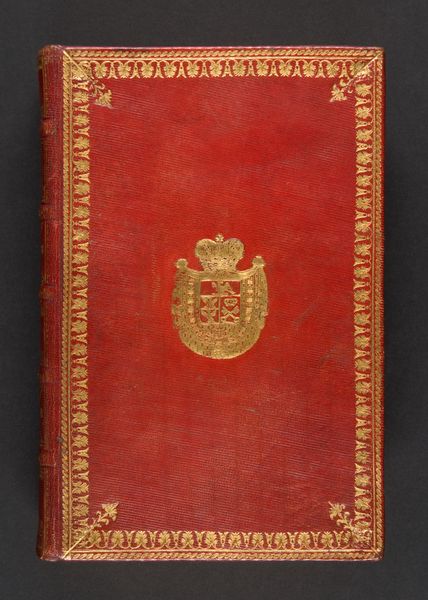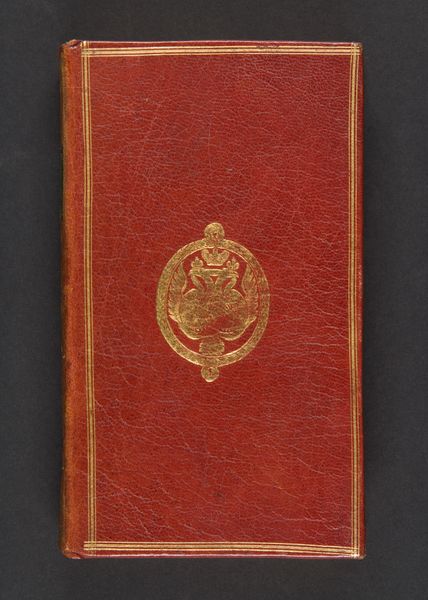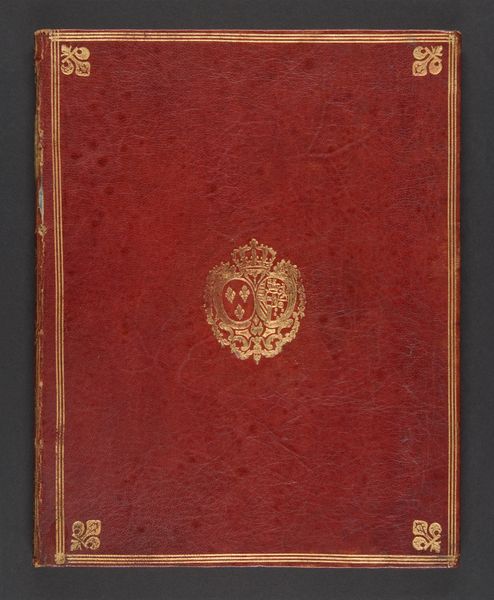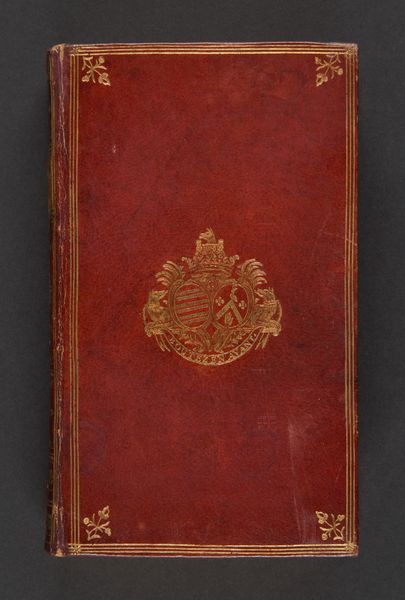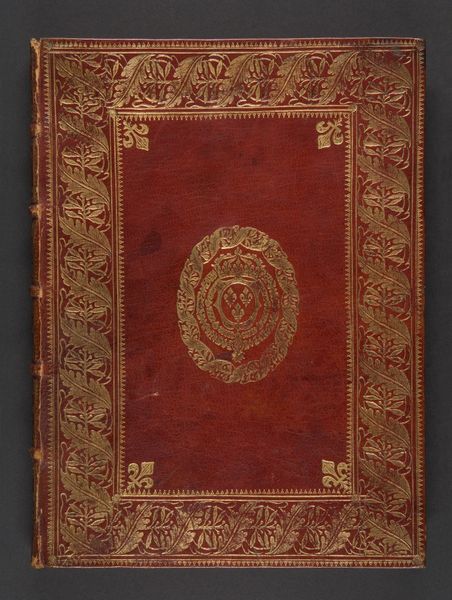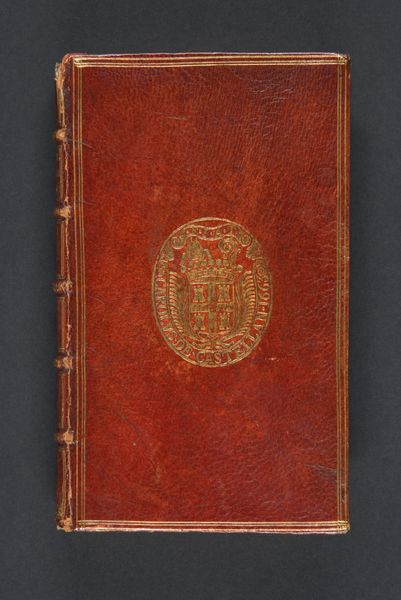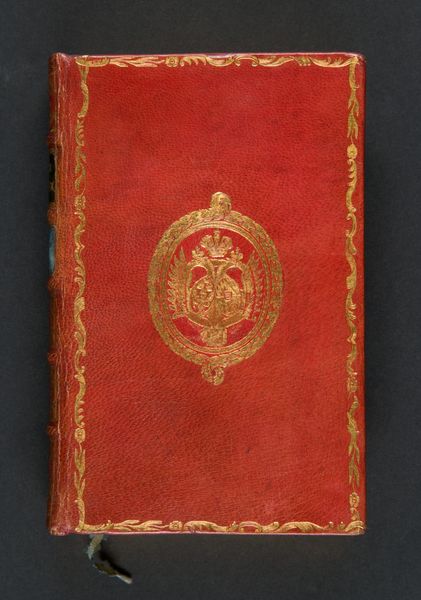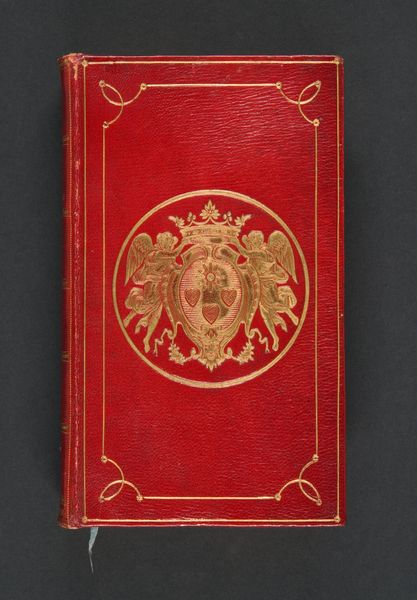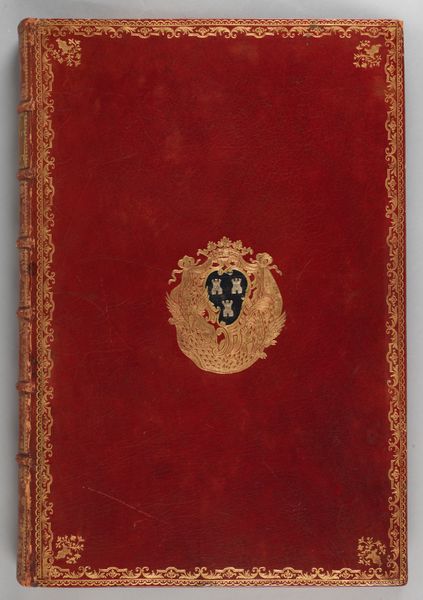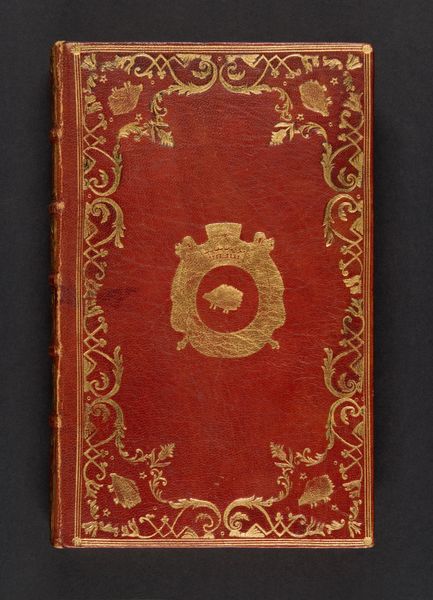
Dimensions: 209 pages : music ; Height: 8 1/4 in. (21 cm)
Copyright: Public Domain
Curator: Ah, look at this book! It’s entitled "L’office de Noël" dating back to 1768 and held in the Metropolitan Museum. There’s something so beautiful about the embossed gilding and leather work. Editor: It strikes me as regal. The deep red and gold evoke a sense of importance and formality. It makes me wonder who the original owner was, and how they interacted with such an exquisite object. Curator: It likely belonged to a member of the French aristocracy or high-ranking clergy, given the materials used, like the gold, and the decorative elements. This book could tell a broader story about religion, status, gender, and how those forces may interact. Editor: Absolutely, think about the laborious process to produce something like this! From the tanning of the leather, the preparation of gold leaf, to the incredibly precise embossing – each step tells a story about the skill of artisans, their work conditions, their place within the economic hierarchy of 18th-century France. Was this artisanal labor valued as highly as the book's intended religious purposes? Curator: I would argue yes and no. Artisan workshops at the time operated under a rigid structure of guilds, and their labour contributed to powerful patrons through religious artwork that reinforces a clear power hierarchy. How were those in lower economic positions depicted, and were these images used as a source of propaganda to justify the disparity of their treatment in comparison to the upper-class, religious figures featured in such gold-gilded material? Editor: An intriguing point. It underscores how closely aligned even devotional objects are with the material conditions of their creation. The gleam of the gold almost blinds you to the labor that went into obtaining it. Curator: Exactly. By thinking about both social dynamics and the material making of the book, we understand not just a pretty object, but also about wealth, identity, labor, gender, race and all their intersectional relationships. Editor: Considering that level of attention, hopefully, prompts deeper respect and understanding of these historical materials beyond their surface appeal. Curator: Indeed, art objects often transcend mere aesthetics—they can also illuminate intricate socio-political histories.
Comments
No comments
Be the first to comment and join the conversation on the ultimate creative platform.
